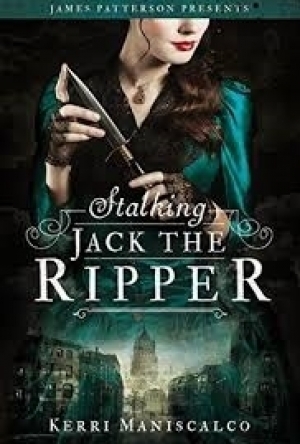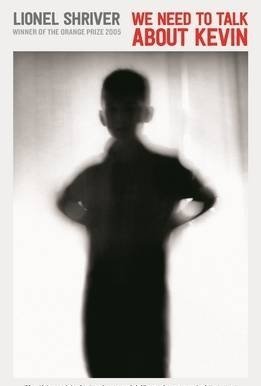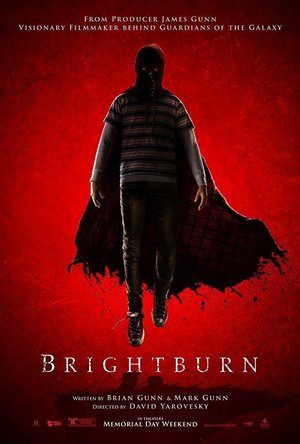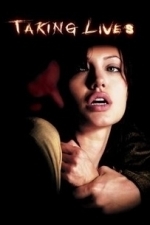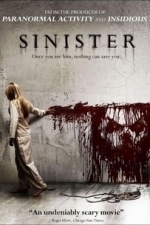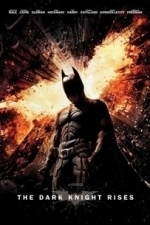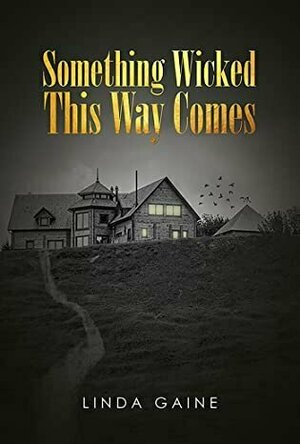Search
Search results
Kyera (8 KP) rated Stalking Jack the Ripper in Books
Feb 1, 2018
Stalking Jack the Ripper is a fascinating, fictional take on the reign of terror that gripped London in the late 1800's. The story is told through the eyes of a teen girl, Audrey Rose, who is doing her best to study under her uncle's tutelage - as a forensic scientist. She is drawn into the murders, even though her family and society does not agree with her inclusion in the affair as it is not right for ladies to be interested in such things.
The author did a brilliant job weaving what facts we know historically about Jack the Ripper into her carefully crafted narrative. The dialogue is a bit clunky at times and the pacing could have been better, but overall I enjoyed this book. Some people felt that the perpetrator was obvious from the first moment they stepped on the scene, but I didn't feel that way. It seemed like the suspense and horror built over the course of the book until you finally realize who the killer is in the final moments before its reveal.
The characters were both a high and low point in the book. I enjoyed the fact that the main character was meant to be a more progressive person than women in her time generally, but sometimes her inner dialogues were strange moments of her thinking utterly ridiculous thoughts and then immediately dismissing them like oh no that cannot be. She desires to be both pretty and fierce and does not understand why society feels that she cannot be both. Audrey Rose also has a propensity for charging into dangerous situations with no planning, when a murderer is stalking the streets looking for women to cut apart. It's difficult to explain how all of those things combined to affect her portrayal, but overall it made her seem less strong, much more insecure, and significantly less grounded than I feel the author was hoping to portray her.
Thomas Cresswell, on the other hand, is the witty British boy that you can help but love when he enters a scene. He made brilliant deductions and didn't miss a moment attempting to seduce Miss Audrey Rose. The two of them together were such a fun team, even if Audrey Rose's inner dialogue was frustratingly superficial. Oh, I hate this boy, oh, I can't help but want to kiss him, he's terrible, he's wonderful. Please, Audrey Rose, control your emotions and be the strong heroine we deserve in this book. Together, they were very reminiscent of Sherlock Holmes and John Watson.
The author creates a vivid landscape upon which this gruesome tableau takes place. That being said, I would definitely caution some readers from this book as the violence is quite explicitly described. It can definitely be too much for some younger readers or people who are squeamish. If you feel like you're okay with the gory details and enjoy forensic science, I believe you will enjoy this book.
The author did a brilliant job weaving what facts we know historically about Jack the Ripper into her carefully crafted narrative. The dialogue is a bit clunky at times and the pacing could have been better, but overall I enjoyed this book. Some people felt that the perpetrator was obvious from the first moment they stepped on the scene, but I didn't feel that way. It seemed like the suspense and horror built over the course of the book until you finally realize who the killer is in the final moments before its reveal.
The characters were both a high and low point in the book. I enjoyed the fact that the main character was meant to be a more progressive person than women in her time generally, but sometimes her inner dialogues were strange moments of her thinking utterly ridiculous thoughts and then immediately dismissing them like oh no that cannot be. She desires to be both pretty and fierce and does not understand why society feels that she cannot be both. Audrey Rose also has a propensity for charging into dangerous situations with no planning, when a murderer is stalking the streets looking for women to cut apart. It's difficult to explain how all of those things combined to affect her portrayal, but overall it made her seem less strong, much more insecure, and significantly less grounded than I feel the author was hoping to portray her.
Thomas Cresswell, on the other hand, is the witty British boy that you can help but love when he enters a scene. He made brilliant deductions and didn't miss a moment attempting to seduce Miss Audrey Rose. The two of them together were such a fun team, even if Audrey Rose's inner dialogue was frustratingly superficial. Oh, I hate this boy, oh, I can't help but want to kiss him, he's terrible, he's wonderful. Please, Audrey Rose, control your emotions and be the strong heroine we deserve in this book. Together, they were very reminiscent of Sherlock Holmes and John Watson.
The author creates a vivid landscape upon which this gruesome tableau takes place. That being said, I would definitely caution some readers from this book as the violence is quite explicitly described. It can definitely be too much for some younger readers or people who are squeamish. If you feel like you're okay with the gory details and enjoy forensic science, I believe you will enjoy this book.
AmyBee (4 KP) rated We Need to Talk About Kevin in Books
Sep 5, 2018
WARNING - SPOILERS AHEAD!!! ALSO, THIS REVIEW IS STILL UNDER CONSTRUCTION SO IF PARTS DON'T MAKE SENSE, WORRY NOT, I'LL BE BACK TO FINISH IT LATER!
I quite liked this psychological family/crime drama although I did think it dragged on quite a bit with a LOT of unnecessary information. I understand that we are meant to be inside Eva's head, experiencing and feeling everything that she does/did but there is still a hell of a lot in there that could easily have been omitted with no harm to the rest of the story. On the other hand, this approach helps if we want to read the story like a 'stream of consciousness' style of narrative.
That said, it was still enjoyable if a little tedious at times due to my above point and I absolutely was not prepared for the ending!
Several people asked on Quora whether the younger sister harmed herself with the cleaning fluid on purpose, which made it very clear to me that some readers have fundamentally misunderstood the entire story, and this makes me wonder if they have a different view altogether on the ending - who do they see as being responsible for the murders? Kevin? Kevin's mother? Or, a combination of the actions of each character and toxic social/familial environments which ignored and subsequently exacerbated the poor mental health of several characters, encouraged cycles of abuse, revenge and retaliation. My guess is that they entirely and wrongly blame Kevin.
Shriver has written this novel very cleverly, as when we think about each character's transgressions out of context, we all know what is wrong and who is responsible; however this is written in such a way that it encourages the reader to pick a character to blame, providing arguments for and against each one along the way. In real life, this would never happen, as we do not get this kind of depth of insight into the lives of mass murderers. We simply blame the killer first and foremost, maybe looking briefly in disdain at his neglectful family.
In this novel, it isn't as easy to simply blame Kevin. He may be the killer, but there are so many more mitigating factors to consider.
His mother's narcissism makes her unable to see or accept her role in the actions of her very sick son. She sees him as "bad" and that's just not true. Even worse is that she treats him as though he is just bad rather than extremely ill.
I do wonder also, if the author got any backlash for writing this on the back of all the school shootings there has been in the US since the 1990's? Did people think this was an opportunistic move in the same way that they lambasted Emma whats-her-name for writing ROOM after the Josef Fritzl scandal?
I quite liked this psychological family/crime drama although I did think it dragged on quite a bit with a LOT of unnecessary information. I understand that we are meant to be inside Eva's head, experiencing and feeling everything that she does/did but there is still a hell of a lot in there that could easily have been omitted with no harm to the rest of the story. On the other hand, this approach helps if we want to read the story like a 'stream of consciousness' style of narrative.
That said, it was still enjoyable if a little tedious at times due to my above point and I absolutely was not prepared for the ending!
Several people asked on Quora whether the younger sister harmed herself with the cleaning fluid on purpose, which made it very clear to me that some readers have fundamentally misunderstood the entire story, and this makes me wonder if they have a different view altogether on the ending - who do they see as being responsible for the murders? Kevin? Kevin's mother? Or, a combination of the actions of each character and toxic social/familial environments which ignored and subsequently exacerbated the poor mental health of several characters, encouraged cycles of abuse, revenge and retaliation. My guess is that they entirely and wrongly blame Kevin.
Shriver has written this novel very cleverly, as when we think about each character's transgressions out of context, we all know what is wrong and who is responsible; however this is written in such a way that it encourages the reader to pick a character to blame, providing arguments for and against each one along the way. In real life, this would never happen, as we do not get this kind of depth of insight into the lives of mass murderers. We simply blame the killer first and foremost, maybe looking briefly in disdain at his neglectful family.
In this novel, it isn't as easy to simply blame Kevin. He may be the killer, but there are so many more mitigating factors to consider.
His mother's narcissism makes her unable to see or accept her role in the actions of her very sick son. She sees him as "bad" and that's just not true. Even worse is that she treats him as though he is just bad rather than extremely ill.
I do wonder also, if the author got any backlash for writing this on the back of all the school shootings there has been in the US since the 1990's? Did people think this was an opportunistic move in the same way that they lambasted Emma whats-her-name for writing ROOM after the Josef Fritzl scandal?
Lucy Buglass (45 KP) rated Brightburn (2019) in Movies
Jul 2, 2019
It was difficult to avoid trailers for James Gunn’s Brightburn, and as a result it was difficult to avoid my excitement too. I had very much been looking forward to this one, as I’m always interested in characters that use their powers for evil instead of good.
In a similar vein to Josh Trank’s Chronicle, the film follows a teenager who starts to realise he’s got special abilities, but ends up having very dark intentions. For Brightburn, though, it’s because Brandon Bryer (Jackson A Dunn) is not of this world, and he was adopted by Tori (Elizabeth Banks) and Kyle (David Denman) who desperately tried to hide the truth from him.
Jackson A. Dunn is undoubtedly the star of the show here, and a young actor that I’m incredibly impressed with. His emotional range is really fantastic, and the way he portrays genuine psychopathic behaviour feels almost too real. I did find myself lost in his performance, and scared of him too. I really hope to see him on another project in the near future.
Elizabeth Banks and David Denman shared great chemistry too, with conflicting opinions as Brandon starts to uncover who he really is. In a way its cliched, a couple fail to conceive and a child (or ‘blessing’ as Tori often calls it) falls to earth, but it takes that trope and turns it into something monstrous that tears the family apart. There’s nothing angelic about this kid.
The biggest downside to Brightburn for me, is that the trailer gave away all the film’s best moments. I could predict what was going to happen, and there were no real surprises for me. The scenes the trailer missed out were disappointingly average, and nothing special. It could’ve benefited from teasing the audience more.
There is also one scene in particular that has very bad special effects, and ruined the emotion I was supposed to be feeling during it. I wish they had decided to do something more subtly brutal here, as that would’ve upped the emotional factor during this crucial moment.
It’s even more disappointing because I did enjoy certain effects, and the use of the POV camera on victims to make it more disturbingly intimate. I was also impressed with the level of gore and the creativeness of the murders, and how it helped to shape Brandon’s character development throughout.
The film had the potential to be more well polished, but sadly repeatedly opted for big and bold effects that were too jarring for me as a viewer. Having said that, the strength of Brandon’s character, the dynamics between the family, and the strength of one or two scenes helped to redeem the film a bit.
It’s entertaining to watch on the big screen with some effective scares and some gory moments that aren’t for those with a weak stomach. I’m happy I spent an evening watching it, but I can’t say I’ll be rushing to see it again.
In a similar vein to Josh Trank’s Chronicle, the film follows a teenager who starts to realise he’s got special abilities, but ends up having very dark intentions. For Brightburn, though, it’s because Brandon Bryer (Jackson A Dunn) is not of this world, and he was adopted by Tori (Elizabeth Banks) and Kyle (David Denman) who desperately tried to hide the truth from him.
Jackson A. Dunn is undoubtedly the star of the show here, and a young actor that I’m incredibly impressed with. His emotional range is really fantastic, and the way he portrays genuine psychopathic behaviour feels almost too real. I did find myself lost in his performance, and scared of him too. I really hope to see him on another project in the near future.
Elizabeth Banks and David Denman shared great chemistry too, with conflicting opinions as Brandon starts to uncover who he really is. In a way its cliched, a couple fail to conceive and a child (or ‘blessing’ as Tori often calls it) falls to earth, but it takes that trope and turns it into something monstrous that tears the family apart. There’s nothing angelic about this kid.
The biggest downside to Brightburn for me, is that the trailer gave away all the film’s best moments. I could predict what was going to happen, and there were no real surprises for me. The scenes the trailer missed out were disappointingly average, and nothing special. It could’ve benefited from teasing the audience more.
There is also one scene in particular that has very bad special effects, and ruined the emotion I was supposed to be feeling during it. I wish they had decided to do something more subtly brutal here, as that would’ve upped the emotional factor during this crucial moment.
It’s even more disappointing because I did enjoy certain effects, and the use of the POV camera on victims to make it more disturbingly intimate. I was also impressed with the level of gore and the creativeness of the murders, and how it helped to shape Brandon’s character development throughout.
The film had the potential to be more well polished, but sadly repeatedly opted for big and bold effects that were too jarring for me as a viewer. Having said that, the strength of Brandon’s character, the dynamics between the family, and the strength of one or two scenes helped to redeem the film a bit.
It’s entertaining to watch on the big screen with some effective scares and some gory moments that aren’t for those with a weak stomach. I’m happy I spent an evening watching it, but I can’t say I’ll be rushing to see it again.
Darren (1599 KP) rated Taking Lives (2004) in Movies
Jul 25, 2019
Story: Taking Lives starts as we see a young man kill another young man to steal his identity, years later a body is discovered in Canada which leads to the local French-Canadian police to call in FBI profiler Illeana (Jolie) to help with the new mystery body. Things take a turn when a man Costa (Hawke) believes he interrupted the next attempted murder before the killer is finished dealing with the body.
When the police learn this killer has been killing and stealing identities the case takes a turn and now they must figure out who the latest victim is and who he has become.
Thoughts on Taking Lives
Characters – Illeane Scott is an FBI Profiler bought in to help with the case of a killer that is stealing identities of the people he is murdering, she gets the profile correct and wants to had home after starting to become interested in one of the key witnesses. Costa is a key witness who interrupts one of the murders before the killer can complete his plan, he gives the information to track the killer. Hart is a man that soon enters Costa’s life after the incident making him the prime suspect as the killer.
Performances – Angelina Jolie is solid enough in this leading role which disappoints because we know she can be a fantastic cop figure. Ethan Hawke struggles with his role too which is only really filled with disappointment as he never convinces in his witness role. Kiefer Sutherland disappoints because we know how good he can be and want to see him more often in a film.
Story – The story is a FBI agent needing to help track down a serial killer who steals identity, yeah these are usually entertaining to watch but this just doesn’t reach the levels of mystery it needs, this might be because this is a repeat viewing and I know the ending, but there are never really any hints or suspects to work with through the film. the film lacks the true tension needed in a film that is filled with twisted crimes going on.
Crime/Mystery – The crime is interesting for a killer to be acting the way they do, the weakest part is the mystery as we just don’t meet enough potential suspects.
Settings – The film is sent in a big city which plays into the idea that someone could steal and identity and kill someone without people noticing someone going missing.
Special Effects – The effects are good because we get to see practical effects when it comes to the kills and aftermath from them.
Scene of the Movie – The lift opening.
That Moment That Annoyed Me – Not enough suspects.
Final Thoughts – This is a crime thriller that lacks the punch to make it stand out from the crowded market, we always need a large group of suspects, but this didn’t give us enough, while it did create a great killer.
Overall: Lacklustre crime thriller
When the police learn this killer has been killing and stealing identities the case takes a turn and now they must figure out who the latest victim is and who he has become.
Thoughts on Taking Lives
Characters – Illeane Scott is an FBI Profiler bought in to help with the case of a killer that is stealing identities of the people he is murdering, she gets the profile correct and wants to had home after starting to become interested in one of the key witnesses. Costa is a key witness who interrupts one of the murders before the killer can complete his plan, he gives the information to track the killer. Hart is a man that soon enters Costa’s life after the incident making him the prime suspect as the killer.
Performances – Angelina Jolie is solid enough in this leading role which disappoints because we know she can be a fantastic cop figure. Ethan Hawke struggles with his role too which is only really filled with disappointment as he never convinces in his witness role. Kiefer Sutherland disappoints because we know how good he can be and want to see him more often in a film.
Story – The story is a FBI agent needing to help track down a serial killer who steals identity, yeah these are usually entertaining to watch but this just doesn’t reach the levels of mystery it needs, this might be because this is a repeat viewing and I know the ending, but there are never really any hints or suspects to work with through the film. the film lacks the true tension needed in a film that is filled with twisted crimes going on.
Crime/Mystery – The crime is interesting for a killer to be acting the way they do, the weakest part is the mystery as we just don’t meet enough potential suspects.
Settings – The film is sent in a big city which plays into the idea that someone could steal and identity and kill someone without people noticing someone going missing.
Special Effects – The effects are good because we get to see practical effects when it comes to the kills and aftermath from them.
Scene of the Movie – The lift opening.
That Moment That Annoyed Me – Not enough suspects.
Final Thoughts – This is a crime thriller that lacks the punch to make it stand out from the crowded market, we always need a large group of suspects, but this didn’t give us enough, while it did create a great killer.
Overall: Lacklustre crime thriller
Night Reader Reviews (683 KP) rated When Darkness Falls in Books
Mar 13, 2020
Honest Review for Free Copy of Book
When Darkness Falls by Kathleen Harryman is an extremely gripping thriller that will have readers up all night. This psychological murder mystery is uniquely written from the killer’s perspective and will have you making conclusions only to find out that you are oh so very wrong.
Tracy Bennett seems to be an average young woman. She has a typical and relatively boring job at a store and leads a typical life. Tracy has her own apartment which she shares with the mysterious Lauren. In her free time Tracy hangs out with her tow best friends Susie and Abigal. For as normal and mundane as Tracy’s life is there are things going on that are directly related to her, yet just like everyone else she remains oblivious.
There is someone terrorizing the city, though the police have prevented an all out panic. This person is suspected to be a large and rather muscular man, the press has named The Slasher. The real Slasher hates this name as they see their murders as artwork. This is the killer’s story and they take great pride in what they do. The killer is extremely aware of how forensic teams work and finds it funny playing mind games with them. The killers is also aware of how society labels them and often debates the characteristics of these traits and personality types. But just who is The Slasher? What makes them choose the seemingly random victims and how will all this affect Tracy?
I don’t know where to start when talking about what I liked best about this book. The perspective this book was written from was refreshing in how unique it was. Even once I figured out what was going on I did not want to accept it and the book always had me second guessing myself. While it may be a little confusing at times it is all explained in the end. What I liked least about this book is that there is not currently a sequel (thought I truly hope Kathleen Harryman writes one). This is one of those books that once you finish it you are left wanting more.
This book is ideal for adults and young adults who can handle reading graphic descriptions of blood and gore. Other than that there are mentions of a rape but nothing in detail. It could however, potentially give younger readers nightmares. I rate this book 4 out of 4. A word of warning, be careful when you start to read this book because you won't want to stop until its done. There was nothing in this book that I truly did not like and that alone is rare and impressive.
https://www.facebook.com/nightreaderreviews/
https://smashbomb.com/nightreader
https://nightreaderreviews.blogspot.com/
Tracy Bennett seems to be an average young woman. She has a typical and relatively boring job at a store and leads a typical life. Tracy has her own apartment which she shares with the mysterious Lauren. In her free time Tracy hangs out with her tow best friends Susie and Abigal. For as normal and mundane as Tracy’s life is there are things going on that are directly related to her, yet just like everyone else she remains oblivious.
There is someone terrorizing the city, though the police have prevented an all out panic. This person is suspected to be a large and rather muscular man, the press has named The Slasher. The real Slasher hates this name as they see their murders as artwork. This is the killer’s story and they take great pride in what they do. The killer is extremely aware of how forensic teams work and finds it funny playing mind games with them. The killers is also aware of how society labels them and often debates the characteristics of these traits and personality types. But just who is The Slasher? What makes them choose the seemingly random victims and how will all this affect Tracy?
I don’t know where to start when talking about what I liked best about this book. The perspective this book was written from was refreshing in how unique it was. Even once I figured out what was going on I did not want to accept it and the book always had me second guessing myself. While it may be a little confusing at times it is all explained in the end. What I liked least about this book is that there is not currently a sequel (thought I truly hope Kathleen Harryman writes one). This is one of those books that once you finish it you are left wanting more.
This book is ideal for adults and young adults who can handle reading graphic descriptions of blood and gore. Other than that there are mentions of a rape but nothing in detail. It could however, potentially give younger readers nightmares. I rate this book 4 out of 4. A word of warning, be careful when you start to read this book because you won't want to stop until its done. There was nothing in this book that I truly did not like and that alone is rare and impressive.
https://www.facebook.com/nightreaderreviews/
https://smashbomb.com/nightreader
https://nightreaderreviews.blogspot.com/
Gareth von Kallenbach (980 KP) rated Sinister (2012) in Movies
Aug 7, 2019
Sinister is a movie that surprised me. I love scary movies, but most of the time it is the pure humor that I find in what people think is scary these days that makes me love them. I figured I would walk into this movie and leave in the same mood I always do. Laughing about how many people jumped in the theater because of what happened on screen. But, this time, I was one of those people. For the first time in over a decade I found a scary movie that downright creeped me out and made me jump. Not just once, more several times.
Sinister opens with old super-8 footage of a family of four being hung from a tree in a rather unique way. The movie is set in a small town in Pennsylvania where Ellison Oswalt (Ethan Hawke; Training Day, Daybreakers) and his family (wife, daughter and son) are moving into a new house. Ellison is a true-crime writer, who hasn’t had a best-selling book in 10 years. His work in the true-crime field did not garner him any favor with the local law enforcement, and the Sheriff in particular would rather see him leave. Shortly, we realize that the house the Oswalt family has moved into the same house that the family in the opening scene lived in, this family is the basis for the book he is writing, and the house is also where they were murdered. This is unbeknownst to the family, except for Ellison himself.
Ellison finds a box in the addicts that is labeled home movies, and it contains several reels of super-8 footage. This footage helps him realize how and why the family from the opening scene were murdered, and their murders spanning from the late 60s to present day. Even more daunting, his discoveries as he moves forward in his investigation place his entire family in the path of a supernatural entity.
I am a firm believer that a film’s score can make or break a movie, despite how good the story is. Sinister did not fail in this department. With haunting melodies littered throughout the movie, and excellent timing by all punctuations, this film will definitely have you tense at exactly the right moments. The one bad thing I can say about this movie, and it was really more of a distraction than a bad thing, was Ethan Hawke’s voice. His voice seemed unnaturally deep compared to my experience with him in his previous roles, a thought which was echoed by many of my fellow critics in the theater. Overall, though, the movie was fantastic. With two interesting cameos in the movie, and a great little role for James Ransone (Inside Man, The Next Three Days), a relative known, and stellar acting from Ethan Hawke, this is a definite must see. Especially for date night, if you’re significant other is into scary movies that is.
Sinister opens with old super-8 footage of a family of four being hung from a tree in a rather unique way. The movie is set in a small town in Pennsylvania where Ellison Oswalt (Ethan Hawke; Training Day, Daybreakers) and his family (wife, daughter and son) are moving into a new house. Ellison is a true-crime writer, who hasn’t had a best-selling book in 10 years. His work in the true-crime field did not garner him any favor with the local law enforcement, and the Sheriff in particular would rather see him leave. Shortly, we realize that the house the Oswalt family has moved into the same house that the family in the opening scene lived in, this family is the basis for the book he is writing, and the house is also where they were murdered. This is unbeknownst to the family, except for Ellison himself.
Ellison finds a box in the addicts that is labeled home movies, and it contains several reels of super-8 footage. This footage helps him realize how and why the family from the opening scene were murdered, and their murders spanning from the late 60s to present day. Even more daunting, his discoveries as he moves forward in his investigation place his entire family in the path of a supernatural entity.
I am a firm believer that a film’s score can make or break a movie, despite how good the story is. Sinister did not fail in this department. With haunting melodies littered throughout the movie, and excellent timing by all punctuations, this film will definitely have you tense at exactly the right moments. The one bad thing I can say about this movie, and it was really more of a distraction than a bad thing, was Ethan Hawke’s voice. His voice seemed unnaturally deep compared to my experience with him in his previous roles, a thought which was echoed by many of my fellow critics in the theater. Overall, though, the movie was fantastic. With two interesting cameos in the movie, and a great little role for James Ransone (Inside Man, The Next Three Days), a relative known, and stellar acting from Ethan Hawke, this is a definite must see. Especially for date night, if you’re significant other is into scary movies that is.
Gareth von Kallenbach (980 KP) rated The Dark Knight Rises (2012) in Movies
Aug 7, 2019
Christian Bale reprises his role as Bruce Wayne/Batman in the final installment of Christopher Nolan’s Batman trilogy, The Dark Knight Rises,and is forced to come face to face with new villains once again. This time it is the terrorist leader Bane (Tom Hardy) and cat burglar, Selina Kyle (Anne Hathaway).
In the previous movie Batman had to combat the famed Joker who caused havoc in the city of Gotham. Joker convinced Harvey Dent to seek revenge against Batman and those responsible for the death of his lover, Rachel Dawes. Dent decides to use his lucky coin to decide the fate of those he assumes are responsible, Commissioner Gordon (Gary Oldman) and his family being just a few of the people captured within Dent’s grip of revenge. While Batman saved the life of Gordon’s young son, many still die. Batman decided to let the public think that he was the one responsible for all the deaths to keep Dent’s name in good standing with the public. Gordan on the other hand knows the truth.
The Dark Knight Rises is set eight years after the extensive damage the Joker brought upon the city and its residents. During this time, Batman isolated himself within the walls of Wayne Manor as Gotham rebuilt itself with the help of Gordon and John Blake (Joseph Gordon Leavitt).
During a celebration of Dent’s life and his successes, Gordan is tempted to tell the people of Gotham the truth behind the murders eight years ago but finds that it may not be the right time to do so. Terrorist leader Bane arrives and takes over the celebration and wounds Gordon forcing his subordinate Blake to take over. After Wayne learns that one of his projects he had been investing in over the years was actually being used for nuclear devices, Wayne decides to shut down the project. One of Wayne’s business rivals is suspected to have employed terrorist leader Bane to takeover the company and use its nuclear devices against the city.
After finding out the truth Bruce Wayne decides to return to the streets of Gotham as Batman, though the decision is met with great resistance by his trusty butler Alfred (Michael Caine). Bane has taken the lead in bringing Wayne Enterprises down and an intense confrontation leaves Batman hurt and condemned to an inescapable prison. Bane is left free to wreak uncontested havoc on Gotham, once again bringing a violent storm of perilous destruction upon its people. While Batman is stuck in Bane’s prison, we learn the sordid history of Bane.
To say much more would give a lot of the story away. Suffice it to say, The Dark Knight Rises is this year’s best comic book movie so far. The graphics, action, soundtrack and opening sequence are amazing. The storyline leaves you wanting more. Christopher Nolan has does an excellent job in all the installments of Batman but is remarkably exceptional in the third and final installment of the series.
In the previous movie Batman had to combat the famed Joker who caused havoc in the city of Gotham. Joker convinced Harvey Dent to seek revenge against Batman and those responsible for the death of his lover, Rachel Dawes. Dent decides to use his lucky coin to decide the fate of those he assumes are responsible, Commissioner Gordon (Gary Oldman) and his family being just a few of the people captured within Dent’s grip of revenge. While Batman saved the life of Gordon’s young son, many still die. Batman decided to let the public think that he was the one responsible for all the deaths to keep Dent’s name in good standing with the public. Gordan on the other hand knows the truth.
The Dark Knight Rises is set eight years after the extensive damage the Joker brought upon the city and its residents. During this time, Batman isolated himself within the walls of Wayne Manor as Gotham rebuilt itself with the help of Gordon and John Blake (Joseph Gordon Leavitt).
During a celebration of Dent’s life and his successes, Gordan is tempted to tell the people of Gotham the truth behind the murders eight years ago but finds that it may not be the right time to do so. Terrorist leader Bane arrives and takes over the celebration and wounds Gordon forcing his subordinate Blake to take over. After Wayne learns that one of his projects he had been investing in over the years was actually being used for nuclear devices, Wayne decides to shut down the project. One of Wayne’s business rivals is suspected to have employed terrorist leader Bane to takeover the company and use its nuclear devices against the city.
After finding out the truth Bruce Wayne decides to return to the streets of Gotham as Batman, though the decision is met with great resistance by his trusty butler Alfred (Michael Caine). Bane has taken the lead in bringing Wayne Enterprises down and an intense confrontation leaves Batman hurt and condemned to an inescapable prison. Bane is left free to wreak uncontested havoc on Gotham, once again bringing a violent storm of perilous destruction upon its people. While Batman is stuck in Bane’s prison, we learn the sordid history of Bane.
To say much more would give a lot of the story away. Suffice it to say, The Dark Knight Rises is this year’s best comic book movie so far. The graphics, action, soundtrack and opening sequence are amazing. The storyline leaves you wanting more. Christopher Nolan has does an excellent job in all the installments of Batman but is remarkably exceptional in the third and final installment of the series.

English Audio Books - Librivox
Book and Education
App
English Audiobooks - Librivox Learn English by reading and listening to "Audiobooks". If you know...
Night Reader Reviews (683 KP) rated Something Wicked This Way Comes in Books
Jan 4, 2021
Meh book
Something Wicked This Way Comes by Linda Gaine is a mildly creepy story perfect for a fall night. It gave me that uncomfortable feeling that is not quite fear from time to time making me want to insure that doors were locked and the lights were on.
Nothing interesting ever happens in small towns. Especially in those so small that most of the residents know each other. In a town that small the murder of a young woman is big news. When this single murder turns into a string of murders that appear to be the work of a serial killer the entire town is put on edge. Everyone, specifically women are encouraged to travel with others and avoid being out at night. Unfortunately not everyone listens.
Amanda is a young woman who has grown up in this small town. She meets her husband at a local bar and they buy a large house in the mountains on the outskirts of town. Too bad a house in the mountains is not an ideal place for a young woman and her child to be living alone. Yet that is exactly what would have happened when Amanda’s husband ends up in the hospital if it wasn’t for Amanda’s best friend. The house my be isolated but that is little comfort to Amanda when the serial killer seams to be showing a special interest in her.
I enjoyed the setting of the book. From the quiet town to the large house up on the mountain. Everything is just so peaceful and lovingly thought out in the town. I was actually able to feel just how unsettling the house on the mountain was for everyone as well. It would have been nice to see dinkus (the there asterisks used to divide chapters into sections) being used. The main negative thing I noticed about this book was it jumping form one person to another without warning. The story became very confusing because of the lack of breaks. Large time jumps also became an issue.
I would not recommend this book for those hoping for horror. Instead this book is better suited for those who enjoy murder mysteries and dramas. Young adults and adults alike should enjoy this book although both should be aware of extremely mild adult content. I rate this book 2 out of 4. Sadly this book did not live up to the promise it seemed to give out. While the book started out moderately creepy it was not able to maintain that feeling. Other than that the book itself was good and had an interesting plot line. The book seems to play more on the human fear of being alone and of close personal tragedies more than anything else.
Nothing interesting ever happens in small towns. Especially in those so small that most of the residents know each other. In a town that small the murder of a young woman is big news. When this single murder turns into a string of murders that appear to be the work of a serial killer the entire town is put on edge. Everyone, specifically women are encouraged to travel with others and avoid being out at night. Unfortunately not everyone listens.
Amanda is a young woman who has grown up in this small town. She meets her husband at a local bar and they buy a large house in the mountains on the outskirts of town. Too bad a house in the mountains is not an ideal place for a young woman and her child to be living alone. Yet that is exactly what would have happened when Amanda’s husband ends up in the hospital if it wasn’t for Amanda’s best friend. The house my be isolated but that is little comfort to Amanda when the serial killer seams to be showing a special interest in her.
I enjoyed the setting of the book. From the quiet town to the large house up on the mountain. Everything is just so peaceful and lovingly thought out in the town. I was actually able to feel just how unsettling the house on the mountain was for everyone as well. It would have been nice to see dinkus (the there asterisks used to divide chapters into sections) being used. The main negative thing I noticed about this book was it jumping form one person to another without warning. The story became very confusing because of the lack of breaks. Large time jumps also became an issue.
I would not recommend this book for those hoping for horror. Instead this book is better suited for those who enjoy murder mysteries and dramas. Young adults and adults alike should enjoy this book although both should be aware of extremely mild adult content. I rate this book 2 out of 4. Sadly this book did not live up to the promise it seemed to give out. While the book started out moderately creepy it was not able to maintain that feeling. Other than that the book itself was good and had an interesting plot line. The book seems to play more on the human fear of being alone and of close personal tragedies more than anything else.
BookInspector (124 KP) rated Leopard at the Door in Books
Sep 24, 2020
More reviews at https://bbookinspector.wordpress.com
My favourite genre to read normally is mystery, crime or thrillers, but I try to choose different genres from time to time. I need to rest from investigations and murders, that’s where historical fiction, YA and other books come in. This book is no exception; I needed something to clear my mind, and it really done the job.
Let me begin by saying, that I loved the environment used in this book. Author portrayed the surroundings and places in this book with great detail, and made me actually feel the African spirit. So, all her travels through Africa, really helped her to describe what she felt to the reader.
The main character in this book was Rachel, and she was the one to share her life with a reader. This novel had a huge variety of very diverse characters, some of them positive and dear to the heart, and some of them really negative, which made me really angry about them. Unfortunately, I did not have any favourite character in this book, as I felt they were not fully developed and opened up to the reader. I would’ve liked to read different perspectives and have more insight into different personalities. Even though I really tried to like Rachel’s rebellious views and kind heart, I think some of her decisions were really silly and disappointing.
The narrative of this novel starts in 1952, when British Empire is on a verge of collapsing, and Kenya wishes its independence. I absolutely adored all the details about Mau Mau, their ideology and ways of action. I loved Michael’s thoughts about war and his country’s independence. I think, this book was really well researched and the whole spirit of the book was shared just gorgeously. The whole story was flowing very smoothly, with some turns and twists, which kept me interested. There was a great love story going on in this book, but I would’ve liked it to be a bit more passionate than it was. Author discussed some interesting topics in this book, such as: Life after mother’s death and relationship with a stepmother; feelings, when you don’t have anyone to turn to; love and betrayal.
The writing style of this novel was not difficult to read, but it contains some African words, which were explained at the end of the book. (If you read it on Kindle, it’s not very helpful) The chapters of this book have decent length, but it might drag a little, because there is not much action going on in this novel. The ending was quite interesting and done the justice to the book and Rachel, but still left me questioning about “What happened to Michael?” So, overall, I actually enjoyed this story of wish for independence, unexpected love, family difficulties and betrayal, and I would recommend immersing yourself into this beautiful Kenyan setting.
Was given this book by publisher and NetGalley for honest review.
My favourite genre to read normally is mystery, crime or thrillers, but I try to choose different genres from time to time. I need to rest from investigations and murders, that’s where historical fiction, YA and other books come in. This book is no exception; I needed something to clear my mind, and it really done the job.
Let me begin by saying, that I loved the environment used in this book. Author portrayed the surroundings and places in this book with great detail, and made me actually feel the African spirit. So, all her travels through Africa, really helped her to describe what she felt to the reader.
The main character in this book was Rachel, and she was the one to share her life with a reader. This novel had a huge variety of very diverse characters, some of them positive and dear to the heart, and some of them really negative, which made me really angry about them. Unfortunately, I did not have any favourite character in this book, as I felt they were not fully developed and opened up to the reader. I would’ve liked to read different perspectives and have more insight into different personalities. Even though I really tried to like Rachel’s rebellious views and kind heart, I think some of her decisions were really silly and disappointing.
The narrative of this novel starts in 1952, when British Empire is on a verge of collapsing, and Kenya wishes its independence. I absolutely adored all the details about Mau Mau, their ideology and ways of action. I loved Michael’s thoughts about war and his country’s independence. I think, this book was really well researched and the whole spirit of the book was shared just gorgeously. The whole story was flowing very smoothly, with some turns and twists, which kept me interested. There was a great love story going on in this book, but I would’ve liked it to be a bit more passionate than it was. Author discussed some interesting topics in this book, such as: Life after mother’s death and relationship with a stepmother; feelings, when you don’t have anyone to turn to; love and betrayal.
The writing style of this novel was not difficult to read, but it contains some African words, which were explained at the end of the book. (If you read it on Kindle, it’s not very helpful) The chapters of this book have decent length, but it might drag a little, because there is not much action going on in this novel. The ending was quite interesting and done the justice to the book and Rachel, but still left me questioning about “What happened to Michael?” So, overall, I actually enjoyed this story of wish for independence, unexpected love, family difficulties and betrayal, and I would recommend immersing yourself into this beautiful Kenyan setting.
Was given this book by publisher and NetGalley for honest review.
